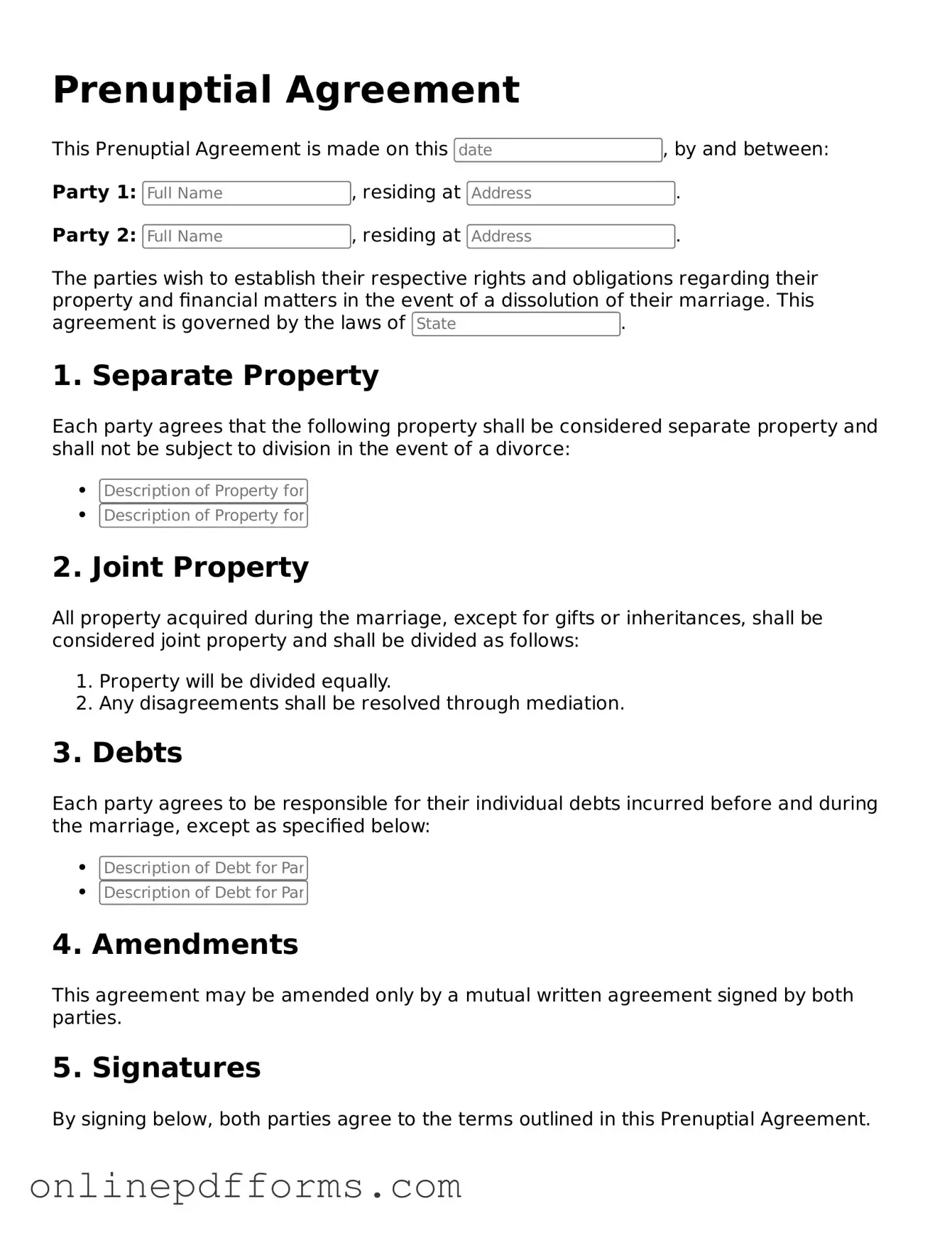Legal Prenuptial Agreement Form
A Prenuptial Agreement is a legal document that couples create before marriage to outline the division of assets and responsibilities in the event of a divorce or separation. This agreement helps ensure clarity and fairness for both parties, allowing them to enter into marriage with a clear understanding of their financial rights. To get started on your own prenuptial agreement, fill out the form by clicking the button below.
Open Prenuptial Agreement Editor Now
